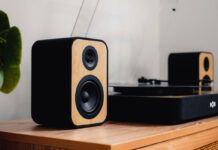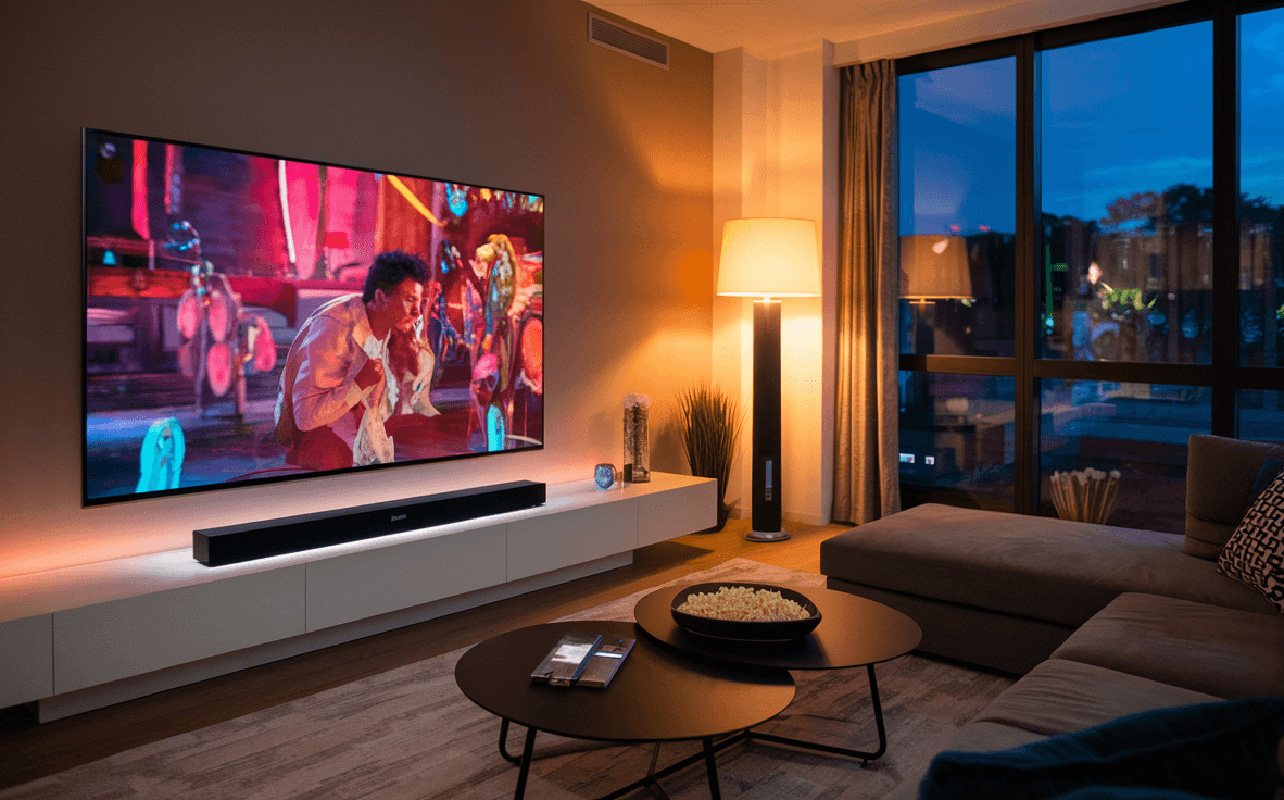
If you’ve ever thought your TV isn’t loud enough or you want to experience movies and sports like you would in the theatre or stadium, a sound bar is the fastest and easiest way to upgrade your TV’s audio. You can set up a sound bar in less than 10 minutes. It doesn’t take up a lot of space, and it amplifies the audio from your TV so you’ll feel as though you’ve just set up your own home theatre.
There are a lot of options in the world of sound bars. Here’s a look at how to choose the best sound bar for you.
Table of contents
- What is a sound bar?
- What does a sound bar do?
- Reasons to add a sound bar to your TV
- What to consider when buying a sound bar?
- Questions to ask before choosing a sound bar
- Technology and features on sound bars
What is a sound bar?
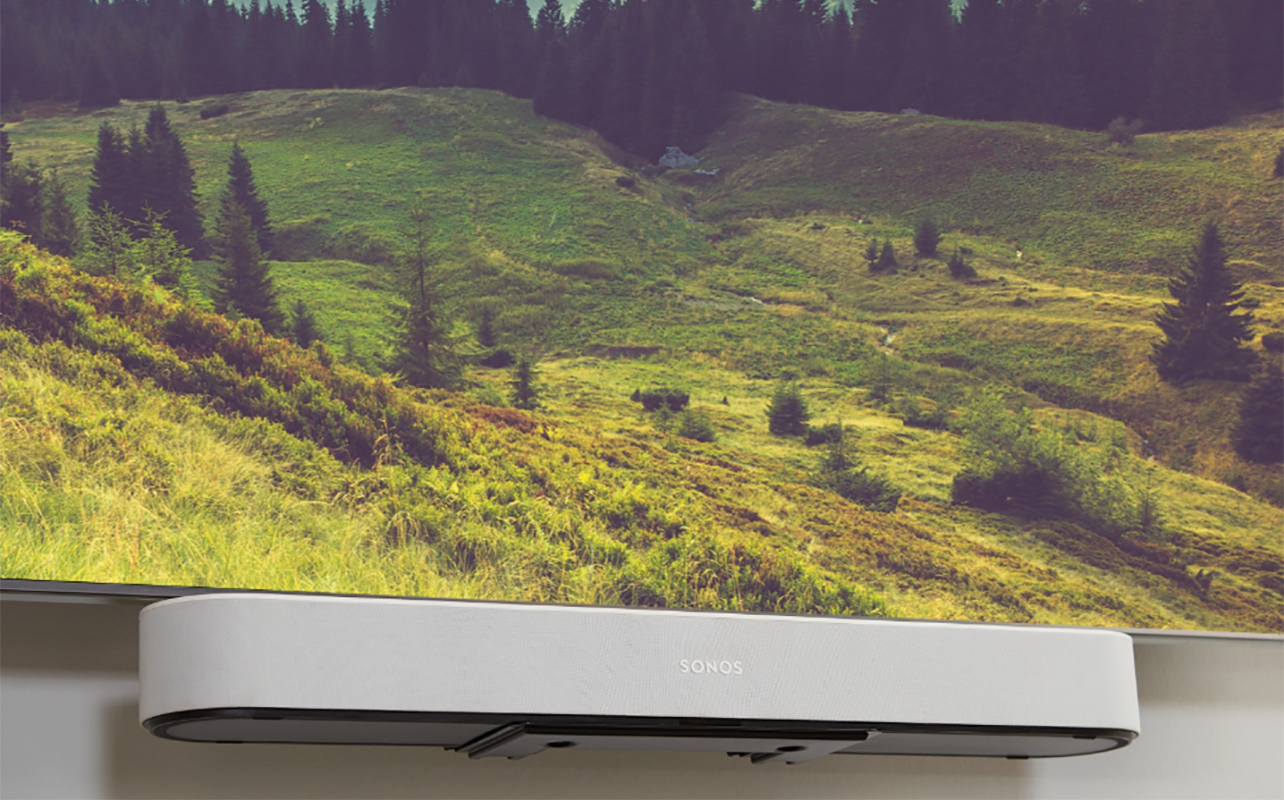
A sound bar is an all-in-one speaker system that plugs into power and connects via HDMI, optical out cable, or USB. They are designed to be compact, sitting under your TV on your entertainment stand or mounted to a bracket directly under a wall-mounted TV.
What does a sound bar do?
What is a sound bar? A sound bar is designed to enhance the audio coming from your TV’s built-in speakers. They give you improved sound in a compact package, without the need for additional speakers. Inside are typically left, right, and centre channels to enhance audio, and some even come with a subwoofer. The most premium models, like sound bars with Dolby Atmos, can mimic the audio you’d traditionally get from even more speakers thanks to front- and up-firing speakers within. They are essentially a more affordable replacement for having multiple speakers in the room.
Reasons to add a sound bar to your TV
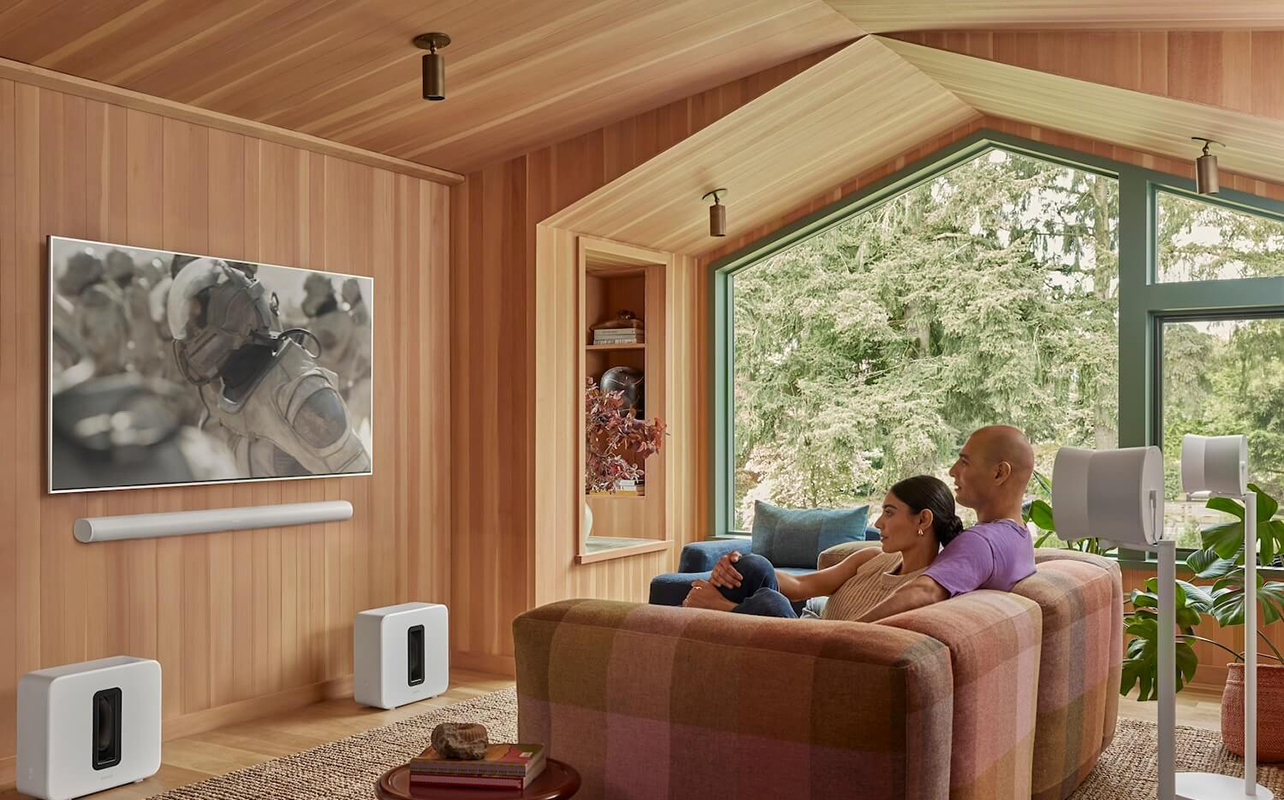
People add sound bars to their TV because they are easy to install and instantly improve audio quality for movies, sports, TV shows, gaming, and more. If you’d like to read about how it’s different from other home audio setups, take a look at our home theatre speakers buying guide.
1. Better sound quality than built-in TV speakers
As TVs have become thinner, the size of TV speakers has become smaller in kind. Most TVs also have downward-firing speakers that can sound flat or tinny. With thin-panel TVs, speakers are placed under the TV or on the back of the panel. That placement doesn’t always produce loud audio either.
Even if your TV uses digital audio enhancements to boost sound, it can’t produce the same cinematic sound quality that replicates a movie theatre experience. With a sound bar to amplify your TV’s audio, you’ll enjoy richer, fuller audio with better clarity and detail. You’ll enjoy enhanced dialogue, clear audio, and in some cases, surround sound effects. Models with dialogue enhancement and a dedicated centre channel can also make speech easier to hear. They level sound so you don’t have to turn up the volume to hear people speaking and then turn it down when a loud action sequence begins. That’s especially useful for action-heavy movies and TV shows, gaming, or broadcast content with louder commercials.
2. Sound bars create an instant home theatre
Sound bars are loved for how easy they are to install. To install most sound bars, it only takes one cable plugged into the HDMI port or optical out and one cable plugged into power. They pair easily with most TVs and some can even work with your TV’s remote so you can control your TV and your sound bar together.
3. Sleek and space-saving
A big advantage with sound bars is that they are compact. You can mount or place it in your TV setup without taking up too much room. This is ideal for smaller homes, rooms, or even apartments. They blend well with most living room set-ups, leaving you space throughout the room for other decor or more living space.
4. Smarter audio features
The latest sound bars come with multiple options for connectivity, including Bluetooth and Wi-Fi. This makes it simple to connect to a mobile device like your phone, tablet, or laptop if you just want to listen to music, or enhance the audio from a video you’re watching on the computer. They also feature voice assistant support, functioning as smart speakers. Additionally, you’ll find features like adaptive sound modes that can adjust audio based on what you’re watching, whether it’s a daytime soap opera, a rom-com, a high-octane movie, or an intense video game. Many also support HDMI ARC/eARC, Dolby Atmos, and low-latency audio, which further enhances content like dramatic streaming shows, music, and gaming.
What to consider when buying a sound bar
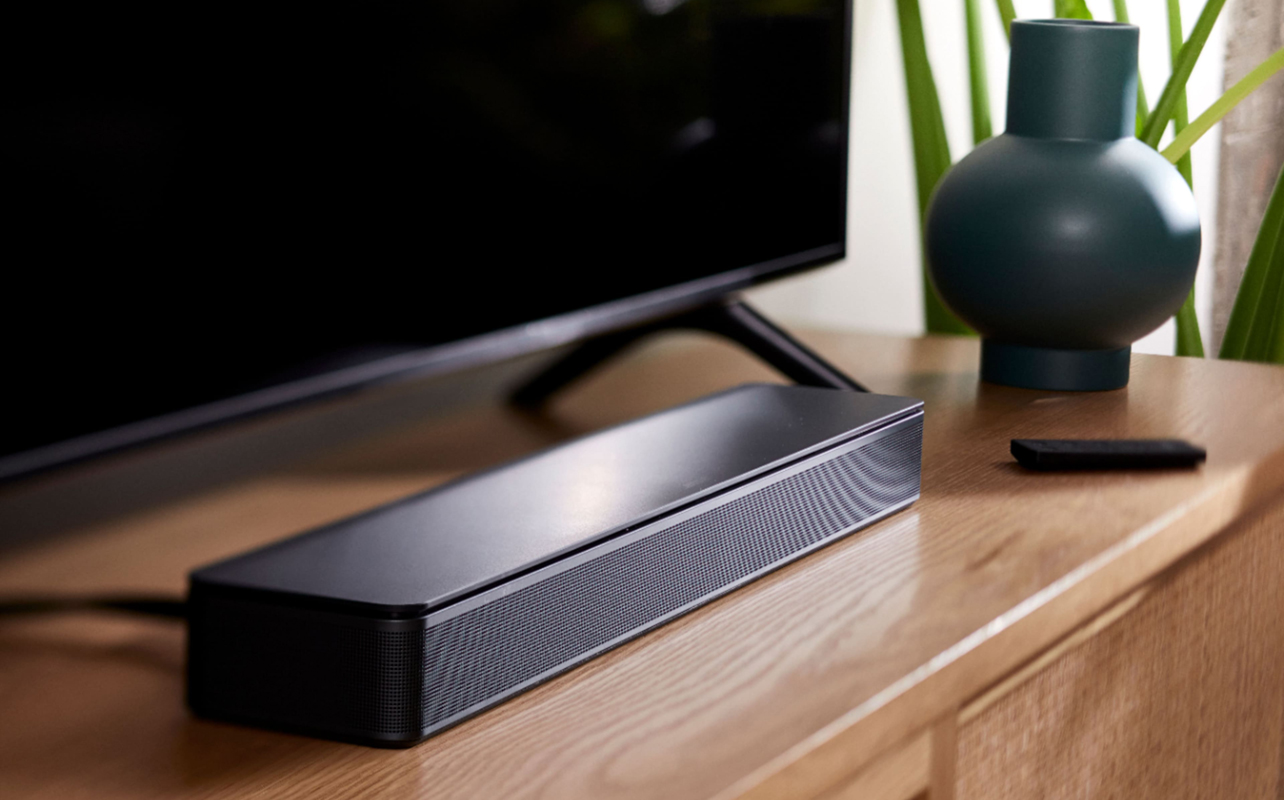
Choosing the right sound bar is not just about picking the best-sounding model. There are a few important factors to keep in mind to ensure it fits your setup and needs:
Room size and setup
The size of your room will largely dictate the type of sound bar you need. For smaller spaces, a simple sound bar can suffice, delivering clear audio without taking up much space. However, in larger rooms, you’ll want a more powerful sound bar, ideally one with rear speakers and a subwoofer to create an immersive surround sound experience.
Sound quality and features
When choosing a sound bar, sound quality should be your top priority. Look for features like Dolby Atmos and DTS (Digital Theatre Systems), which provide immersive, 3D audio that brings movies, music, and games to life.
Connectivity options
Make sure the sound bar is compatible with your TV or other devices. Most sound bars today support HDMI ARC or eARC, which delivers high-quality audio and simplifies the connection. Wireless Bluetooth or Wi-Fi options are great for streaming music directly from your phone or other smart devices. Some devices come with one or the other, more premium models among the best sound bars have both.
Design and space
Sleek, low-profile sound bars can blend seamlessly with your decor, while larger, more robust models may need more room but deliver more powerful audio. Be sure to measure your TV stand or wall space to ensure the sound bar fits comfortably without obstructing your screen.
Smart features
Many sound bars now come with built-in voice assistants like Alexa or Google Assistant. This allows for hands-free control and easy integration with smart home devices. You can adjust settings, play music, or manage other devices simply by using your voice. For a fully connected setup, choose sound bars with multi-room audio support. This lets you sync with other smart speakers throughout your home.
AI features
Yes, you can find AI technology even in sound bars. These AI-powered enhancements can do things like adjust sound in real time based on not only what you’re watching but also where you’re sitting. It analyzes the room’s acoustics and optimizes things like bass level, surround effects, and volume accordingly. AI-enhanced dialogue clarity is a very useful feature as well. It uses machine learning to isolate voices and make speech easier to hear. This is a game-changer for those who often watch TV late at night when others are asleep and have to turn the volume down low or use captioning to be able to understand quieter dialogue or dialogue in scenes with louder background noise.
Entertainment needs
Consider not only where the sound bar will be, but what you most often watch (and listen to) with it. If you’re into movies, a sound bar with Dolby Atmos is worth the investment so you can enjoy immersive sound. For gamers, look for features like HDMI 2.1 passthrough, low input lag, and VRR support to ensure you get a good experience with video and audio that’s perfectly in sync. Music lovers should consider a sound bar with high-res audio support or even a dedicated music mode. This will afford better clarity and audio separation. You’ll also want one with both Wi-Fi and Bluetooth support so you can stream seamlessly from mobile devices.
Questions to ask before choosing a sound bar
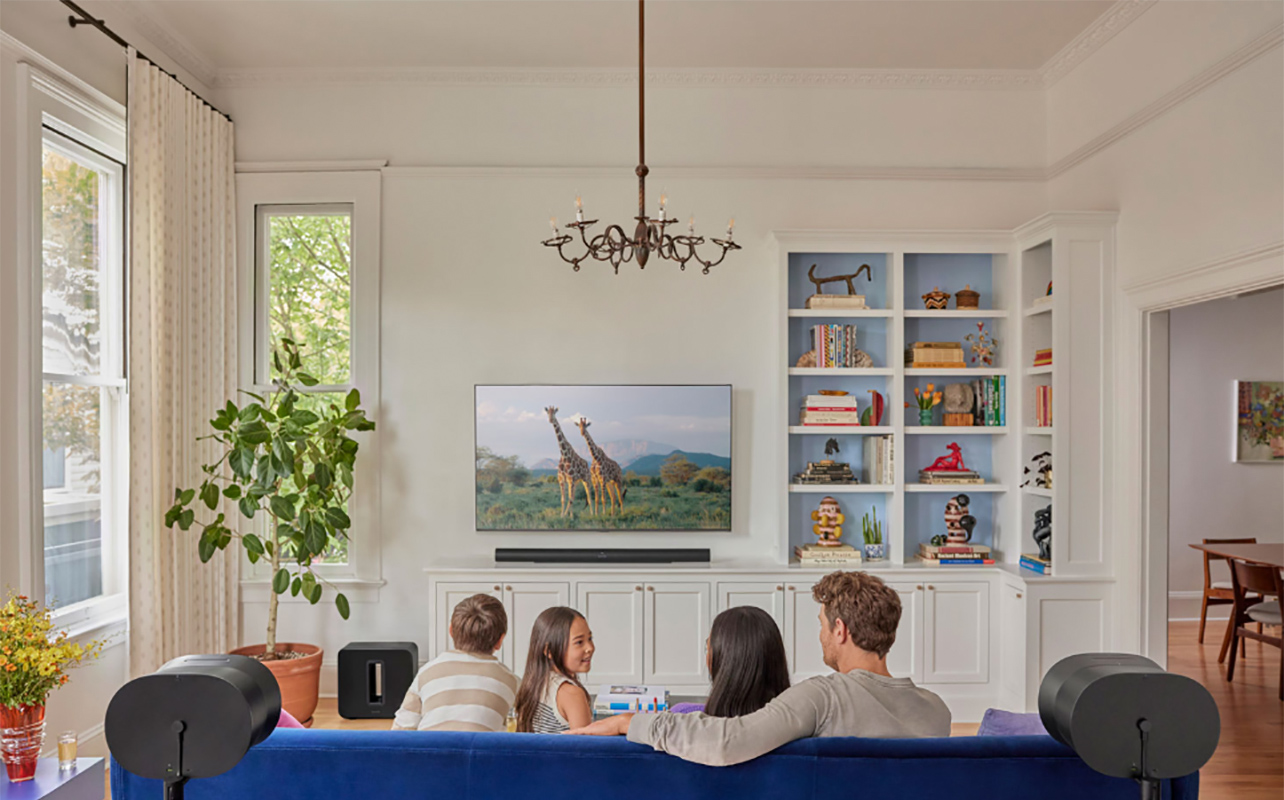
There are a few different kinds of sound bars. You can narrow down your choices by asking yourself these questions:
1. How many channels would you like your sound bar to have?
Sound bars contain two, three, or more speakers within the speaker cabinet. These speakers are called channels, and the channels inside of a sound bar produce treble, bass, and height throughout different areas of the room. Some sound bars are also packaged with a subwoofer or extra wired or wireless speakers.
What are channels on a sound bar?
It’s important to first understand what channels are on a sound bar. These are listed in the form of numbers that might look like 2.0, 3.1, or even 5.1.2. The first number is the number of main channels for the left, right, centre, rear, and side. If the second number is a “1” (as in 2.1), this means that the sound bar includes a subwoofer. And if there’s no number or a “0,” it does not have a sub. The third number pertains to up-firing or height speakers, which denote Dolby Atmos integration.
Thus, a 7.1.4 channel sound bar has seven speakers in the sound bar, one external subwoofer, and four height channels. By contrast, a 5.1 system would include five main speakers and a sub.
Types of sound bar channels
There are a few main types of sound bar. Keep in mind that you’ll need a minimum of a 3 channel sound bar to produce surround sound. A 3-channel sound bar has a left, centre, and right speaker. The centre speaker handles the dialogue and the left and right speakers amplify audio, creating an atmosphere of surround sound.
- 2 channels: one left and one right speaker
- 3 channels: left speaker, centre speaker, and right speaker
- 3.1 channels: left speaker, centre speaker, and right speaker plus one subwoofer
- 5.1 channels: centre, right, left, two rear speakers, and one subwoofer
- 7.1 channels: centre, right, and left, with the rear speakers split into four channels, and one subwoofer
- 9.1 channels: Has nine speakers in the cabinet and one subwoofer.
You’ll want to keep in mind that 5, 7, and 9 channel sound bars may be wider and longer than 2 or 3 channel sound bars. Since a sound bar with more channels may have a longer cabinet, it will takes up more space under your TV and should be used with a larger TV.
2. Do you want extra speakers to connect to your sound bar?
If you want a sound bar that functions like home theatre speakers would, you can choose a sound bar with extra speakers that connect via a wire or wirelessly to the sound bar and subwoofer.
For example, a 5.1.2 channel sound bar has five speakers in the speaker cabinet, one subwoofer, and two height speakers you can place away from your TV. This type of sound bar is a great choice for rooms that are larger or if you’d like to have extra speakers to amplify sound in the room.
3. What size sound bar do you need?
Ideally, you’ll match the size of the sound bar to the width of the TV. It also depends on the furniture if you plan to mount it that way as well as the room layout and your aesthetic preference. Typically, sound bars will note in their description what size TVs they work best with. But as a general rule, the width should be about the same as the width of your TV, or even slightly smaller.
So, a 55-inch TV, for example, goes perfectly and looks balanced with a 40-45-inch sound bar. Consider the size of the room itself as well. A compact 2.0 or 2.1 sound bar that measures anywhere from 30-36 inches is enough for a bedroom, den, or other small living space. For larger living rooms or dedicated home theatres, consider a wider sound bar that’s over 45 inches in length with 3.1 or 5.1 channels or more. This will better fill the space with sound and support surround sound and Dolby Atmos set-ups.
4. Do you want a passive vs active sound bar?
One of the choices when selecting a sound bar is whether you’d like a passive or active sound bar. A passive sound bar does not have a built-in amplifier. If you choose a passive model, you’ll need to own a receiver or purchase a receiver or amplifier to use it.
An active sound bar has a built-in amplifier, so it’s a stand-alone speaker system that doesn’t require any other components to work. If you plan on using your sound bar as part of a home theatre speaker system with an outside amplifier or receiver, you may want to choose a passive sound bar. If you just want your sound bar to work out of the box without extra speakers or devices, an active sound bar may be for you
5. Where will you place your sound bar?
There are two main sound bar styles: bar sound bars and pedestal sound bars. A bar sound bar is the most common style. It’s long, thin, and sits directly under your TV or can be mounted on the wall below a wall-mounted TV. A pedestal-style sound bar is a pedestal your TV sits directly on top of. It’s usually square in shape. Both types can have similar sound quality, so you may choose one or the other based on what style you prefer.
6. Which brand should you choose?
Generally, you don’t need a specific brand of sound bar to match your TV. But there are some advantages in doing so. Both LG and Samsung, for example, have technologies in their latest sound bars that combine the audio from a compatible sound bar with that of the TV’s built-in audio to further enhance and sync sound. Some even come with mounting brackets specifically designed for perfectly paired sound bars. You may also be able to control the sound bar and the TV using the same remote, which helps reduce clutter and simplify the process. But typically, sound bars are designed to be universal. As long as it has the right connections, they can be used with any TV from any brand.
Technology and features you’ll find on sound bars
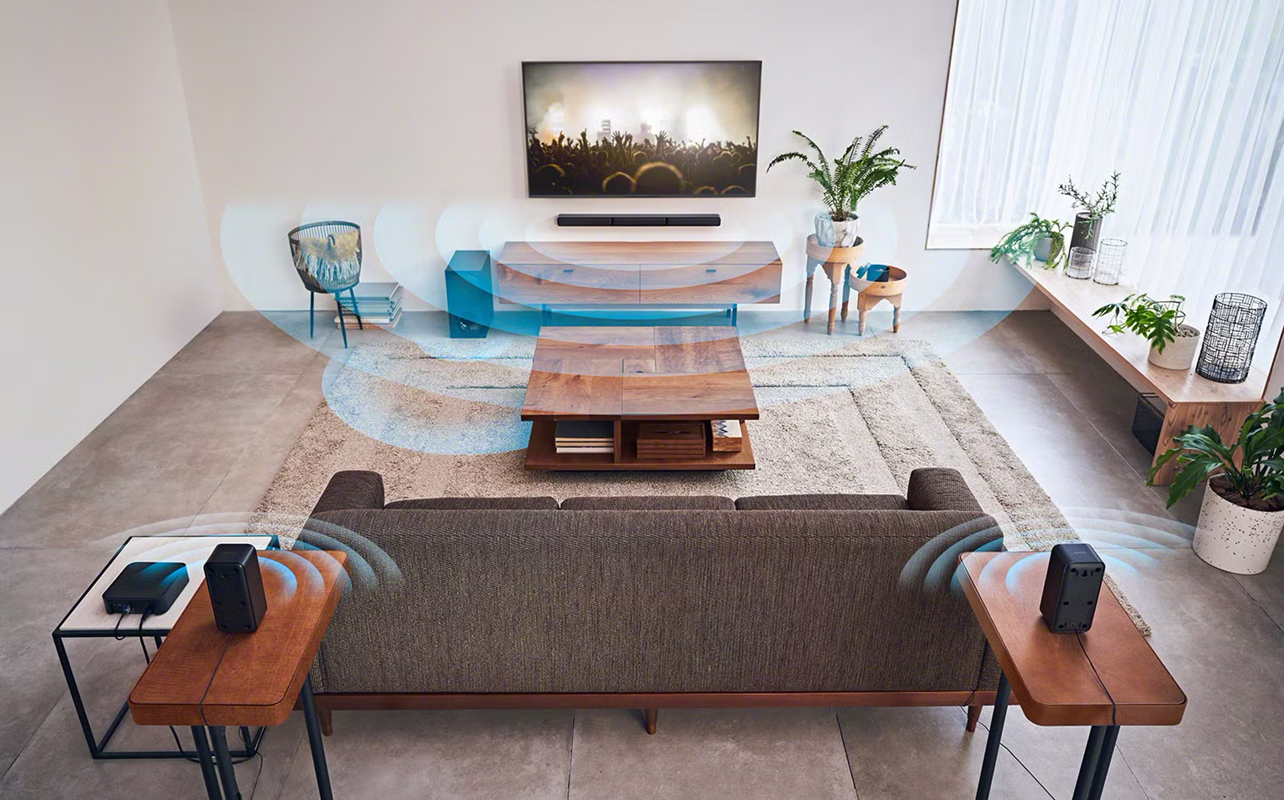
Sound bars have a lot of unique features and technology. Here are a few features you’ll want to look for when choosing the best sound bar for your TV.
1. Dolby Atmos and DTS:X sound bars
Some sound bars have support for Dolby Atmos and DTS:X. Dolby Atmos and DTS:X are both types of object-based surround sound technology. The main difference between the two is that Dolby Atmos requires a sound bar to use height channels while DTS:X is more flexible in terms of where you can position the speakers.
When you watch Dolby Atmos content and DTS:X content on a Dolby Atmos or DTS:X powered sound bar you’ll experience the best in 3D audio. Sound will track across the sound bar, so if someone is running from gunfire or there is a helicopter flying overhead, you’ll hear the sound move along the length of the sound bar.
2. Virtual surround sound technology
A sound bar with virtual surround sound, also known as beam technology, can make you feel as though you are surrounded by audio. A sound bar with this technology and Dolby Atmos support will push audio outward and away from the TV, amplifying it so it feels as though it’s beside you and above you. This creates a surround sound experience without the need for extra speakers.
3. Room tuning technology
A sound bar with room tuning technology can calibrate your audio specifically for the room it’s placed in. This type of sound bar will walk you through a setup process to determine the acoustics in your room. Some types will use an app to calibrate the sound bar, while others will use a tuning device that’s included with your purchase.
4. Sound bar modes
Some sound bars offer different sound modes. These sound modes will have names like Surround Sound, Adaptive, Sports or Game mode. You can choose adaptive sound if you’d like your sound to be the same decibel level overall, for example. When in adaptive mode your sound bar will adjust audio levels so dialogue and sound effects all sound like they are at the same volume level. Game mode is used to enhance audio when playing on gaming consoles. Surround sound will virtually project audio throughout your room to mimic the output of multiple speakers.
5. Bluetooth and Wi-Fi on sound bars
Many sound bars have integrated Bluetooth, Wi-Fi, Google Cast, or AirPlay connections so you can stream audio from your phone or tablet. This type of sound bar will connect to a compatible app you can use to control the sound bar, adjust your settings, or stream music from apps like Spotify or Apple Music.
6. Night sound
Some sound bars offer a mode called Night sound. This mode will let you keep your volume low but enhances dialogue so you can hear clearly without waking anyone up due to loud sound effects or loud dialogue.
7. Remote control
Most sound bars include a remote control. Some also let you pair your sound bar with your TV’s remote control or will pair easily with a universal remote. You can add your sound bar to your TV and control volume, channel, and streaming playback from one central remote. Some sound bars also work with their own dedicated app so you can control audio from your phone or tablet.
8. Voice control
Some sound bars are compatible with your favourite voice assistant. You can connect it to Google Assistant, Siri, or Alexa and control it with voice commands. Other types of sound bars have a virtual assistant built-in, so you can use voice commands and your sound bar will respond.
Which sound bar is best for your home?
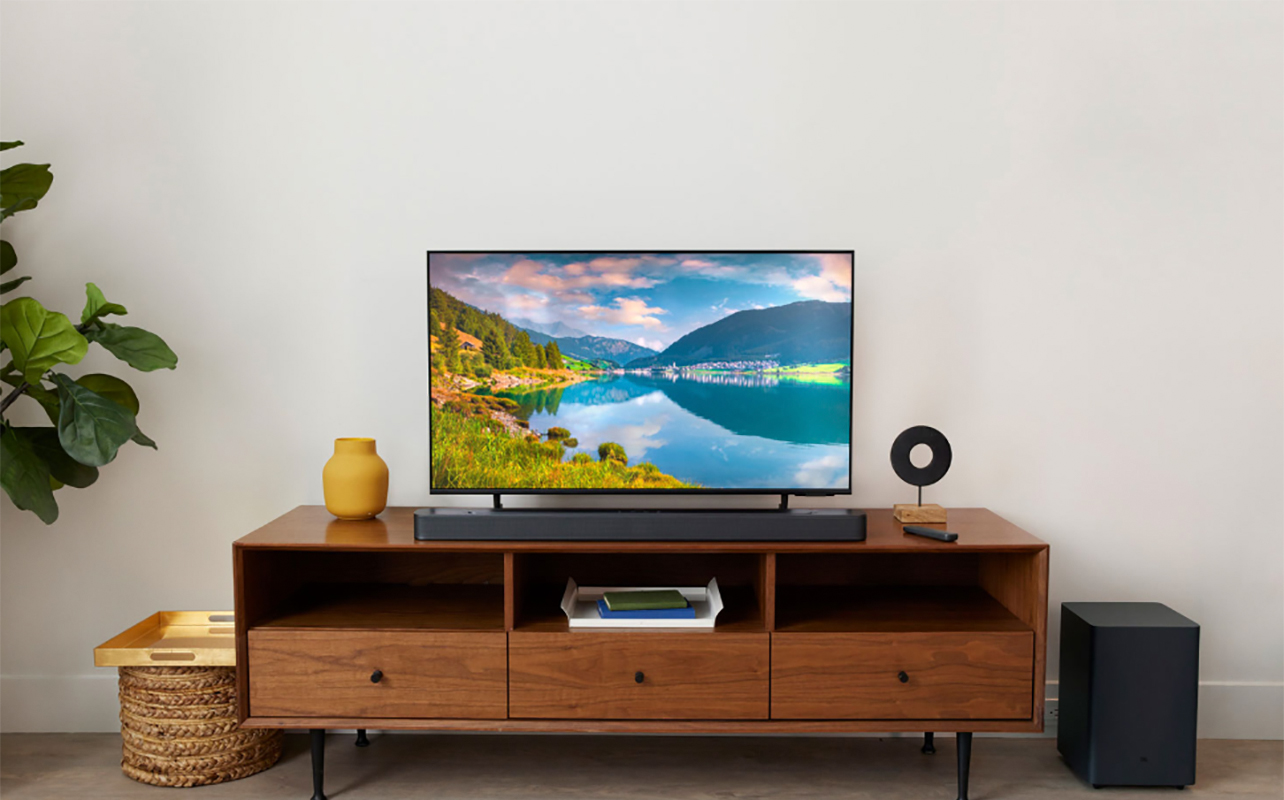
As you can see, there’s a lot of choice when it comes to choosing a sound bar for your TV. Whether you choose a 3.1 channel sound bar or a 9.1.5 channel sound bar with extra speakers, you’ll love how your new system upgrades the audio of your TV. Don’t forget to consider size, placement, type of content you generally watch, and additional features as well, like Dolby Atmos or smart assistance. Once you run through that checklist, you’ll find the perfect sound bar match.






